PBY Catalina
The PBY Catalina was a twin-engined American flying boat of the 1930s and 1940s, designed by Consolidated Aircraft Corporation. Several variants were built at five U.S. and Canadian manufacturing plants. It was named after after Santa Catalina Island, California
One of the most widely used seaplanes of World War II, Catalinas served with every branch of the U.S. Armed Forces and in the air forces and navies of many other allied nations for anti-submarine, maritime patrol, convoy escort, and air-sea rescue duties. In Canadian service it was known as the Canso.
Allied forces used them successfully in a wide variety of roles for which the aircraft was never intended. PBYs are recognized for their rescue role, in which they saved the lives of thousands of aircrew downed over water.
The designation "PBY" was created in accordance with the U.S. Navy aircraft designation system. PB indicated "Patrol Bomber" and Y indicating themanufacturer code assigned to Consolidated Aircraft. Catalinas built by other manufacturers for the U.S. Navy were designated according to different manufacturer codes.
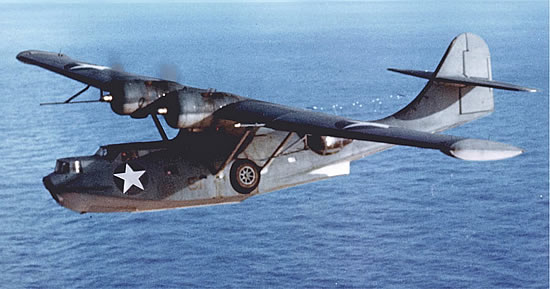 Consolidated Catalina PBY-5A in flight |
Although slow and ungainly, Catalinas distinguished themselves in World War II. In their role as patrol aircraft, Catalinas participated in some of the most notable naval engagements of World War II. The aircraft's parasol wing and large waist blisters provided excellent visibility and combined with its long range and endurance, made it well suited for the task.
The OA-10 was the U.S. Army Air Forces' version of the PBY series. The OA-10 operated primarily for air-sea rescue work with the USAAF's Emergency Rescue Squadrons throughout WWII and for several years thereafter. During the war, OA-10 crews rescued hundreds of downed fliers.
When production ended, about 3,300 Catalinas had been built. The most popular model was the PBY-5A, with 802 built, followed by the PBY-5, of which 684 were built. The last Catalina in U.S. service was a PBY-6A operating with a Naval Reserve squadron, and was retired from use in January of 1957.
Catalinas were also used for commercial air travel and aerial fire-fighting waterbomber. A number of Catalinas survive today around the world, some in static displays and aothers in airworthy condition.
PBY Catalina Photographs
U.S. Army Air Forces OA-10 and crew during World War II |
 |
Consolidated OA-10 Catalina 433879 at the National Museum of the United States Air Force in Dayton, Ohio |
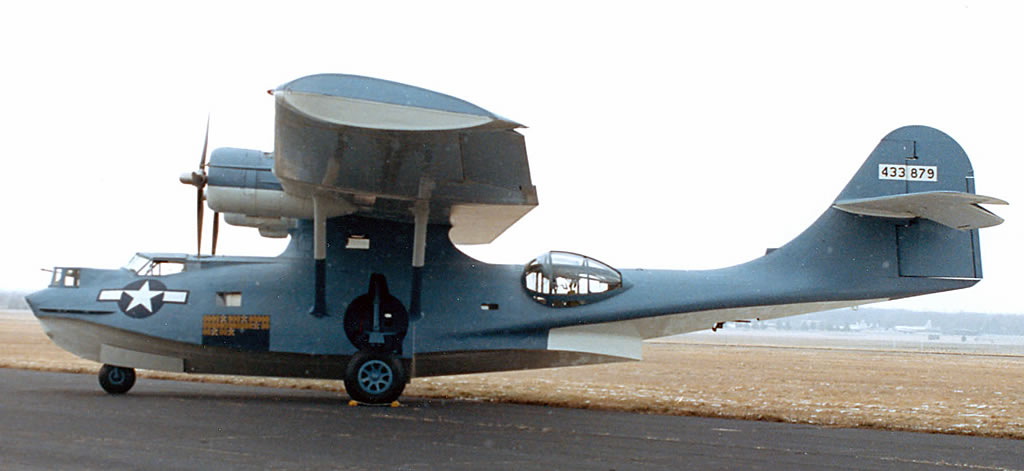 |
Canadian Vickers PBV-1A Canso A, 433915, at RIAT, England in 2009. This aircraft was built in 1944 for the Royal Canadian Air Force in 1944. |
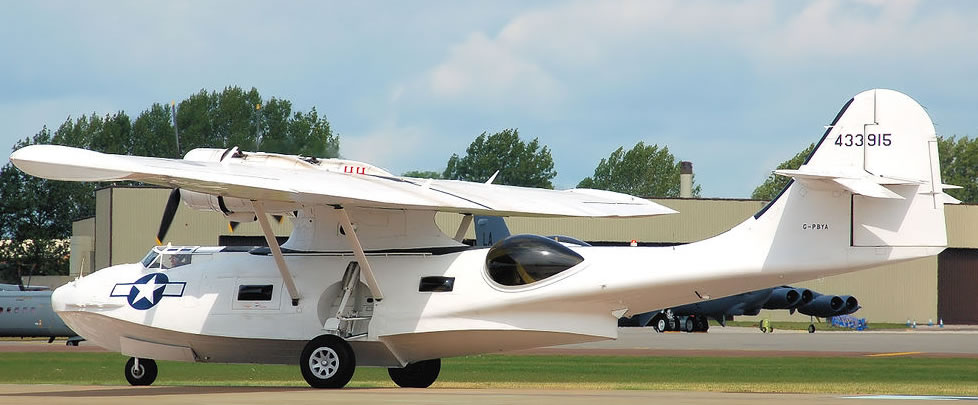 |
PBY-5A Catalina N9767 "La princesse des étoiles" (The Princess of the Stars)
Built under license by Boeing in Canada in 1942, this Catalina entered service with the Royal Canadian Air Force (RCAF) with number 9767, then was assigned to Squadron 162, Iceland.
The N9767 is one of the rare Catalinas in flight condition that claimed a victory by sinking a German submarine during World War II.
After the war, from 1946 to 1959, the Catalina was operated by Canadian Pacific Airlines for the transport of passengers and cargo, and later served with other airlines. In 1970, it was refitted as a water bomber.
In 1994, it became the property of a French pilot, who had it configured as a flying television studio. It was sold in 2019 to a group in Eugene, Oregon USA.
PBY-5A Catalina N9767 "La princesse des étoiles", Francazal le, France 9/24/2016 (Photo by DELEHELLE Eric) |
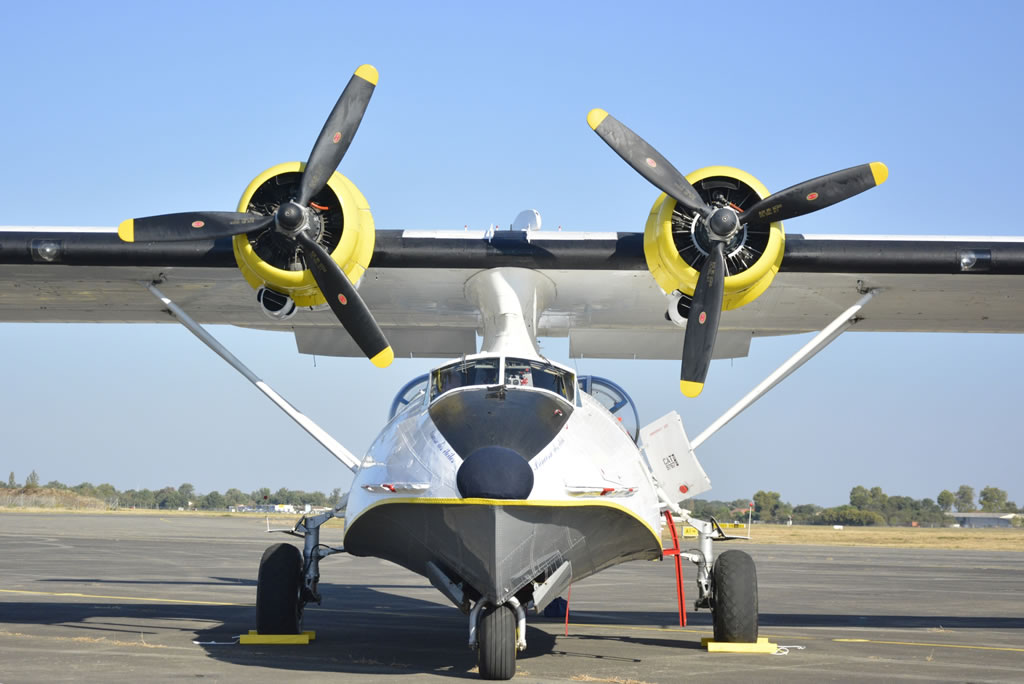 |
PBY-5A Catalina N9767 "La princesse des étoiles", Francazal le, France (Photo by DELEHELLE Eric) |
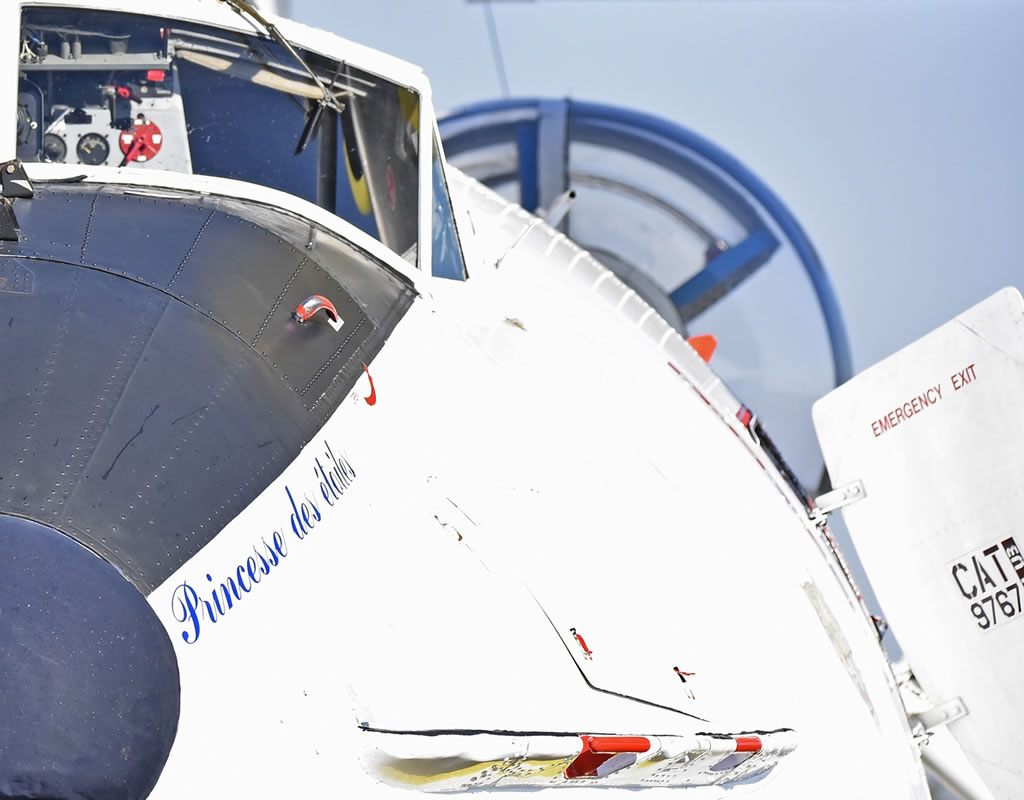 |
Close-up view of engine on the PBY-5A Catalina N9767 (Photo by DELEHELLE Eric) |
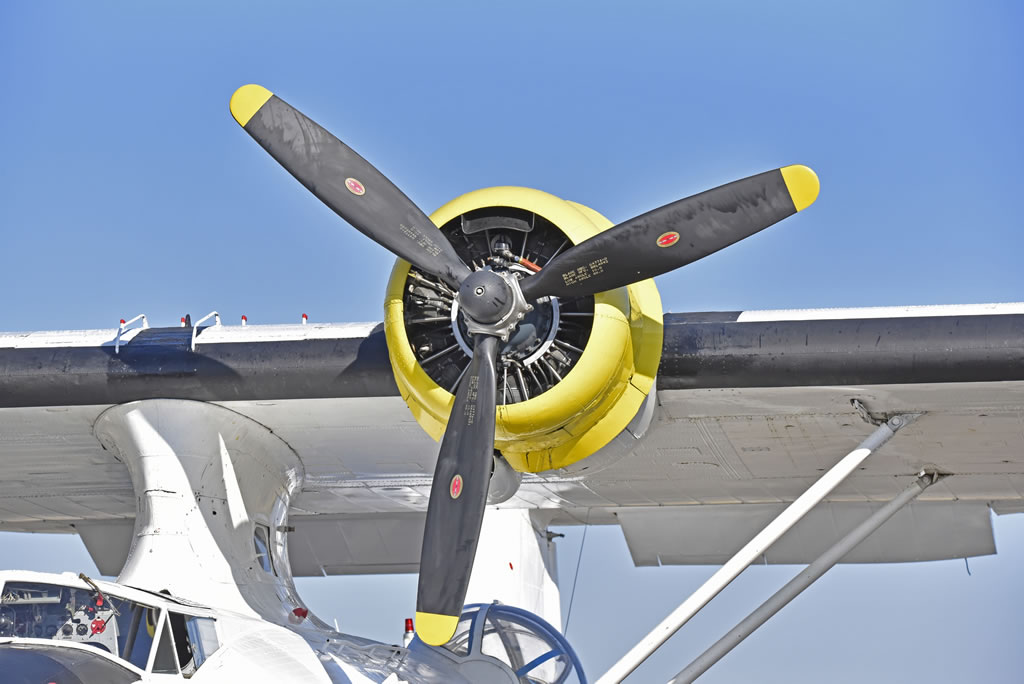 |
PBY-5A Catalina N9767 "La princesse des étoiles", in flight over Francazal le 9/24/2016 (Photo by DELEHELLE Eric) |
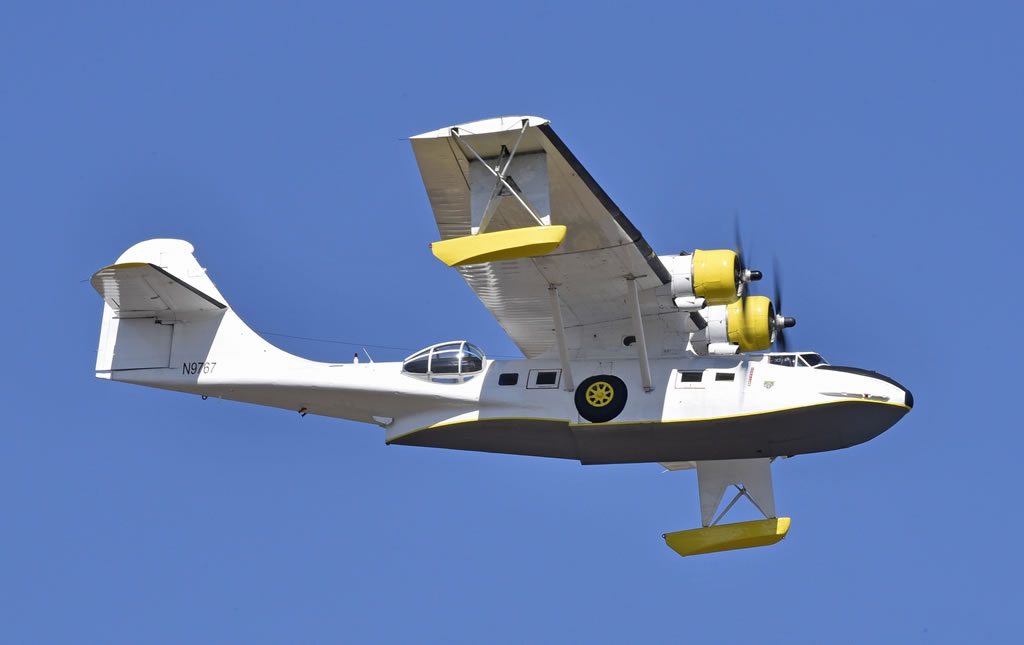 |
PBY-5A Catalina N9767 "La princesse des étoiles", Melun, France (Photo by DELEHELLE Eric) |
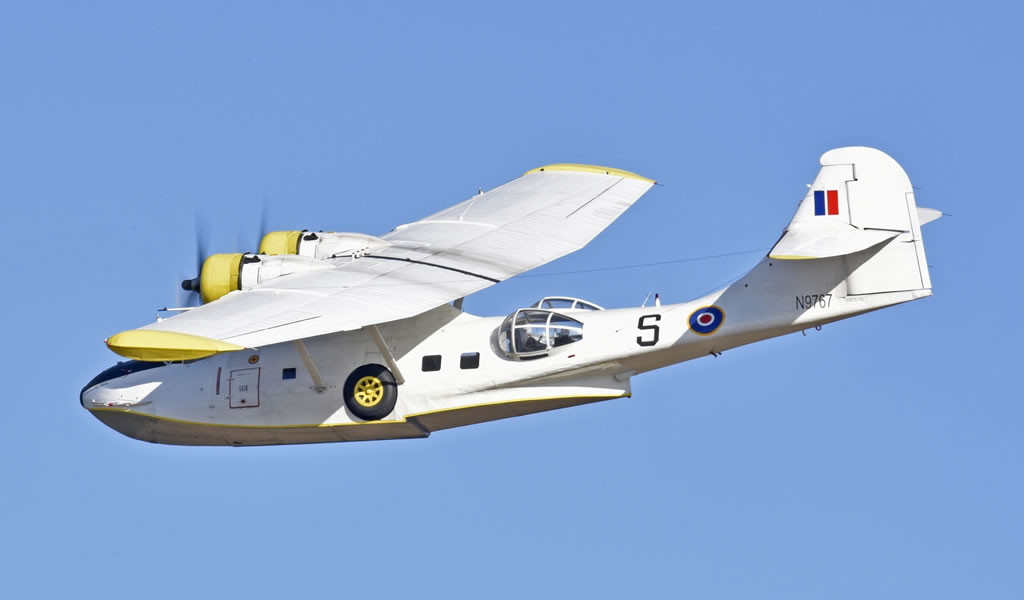 |
PBY-5A Catalina N9767 in flight over Melun (Photo by DELEHELLE Eric) |
 |
PBY Catalina "Miss Pick Up" G-PBYA
G-PBYA was originally ordered for the Royal Canadian Air Force as a Canso A amphibian, basically equivalent to the US Navy PBY-5A. It was built by Canadian Vickers at Cartierville, Quebec in 1943 was allocated their construction number CV-283 before adopting the RCAF serial 11005.
The G-PBYA Catalina's livery is painted to represent a wartime USAAF OA-10A Catalina 44-33915 of the 8th Air Force, 5th Emergency Rescue Squadron, based at Halesworth, Suffolk.
The Catalina is operated by Plane Sailing Air Displays Limited on behalf of Catalina Aircraft Limited which is made up of a number of shareholders. The enterprise is supported by its own ‘fan club’ – The Catalina Society.
Read more about "Miss Pick Up" at The Catalina Society website.
PBY Catalina "Miss Pick Up", Registration Number G-PBYA, 433915 (Photo by DELEHELLE Eric) |
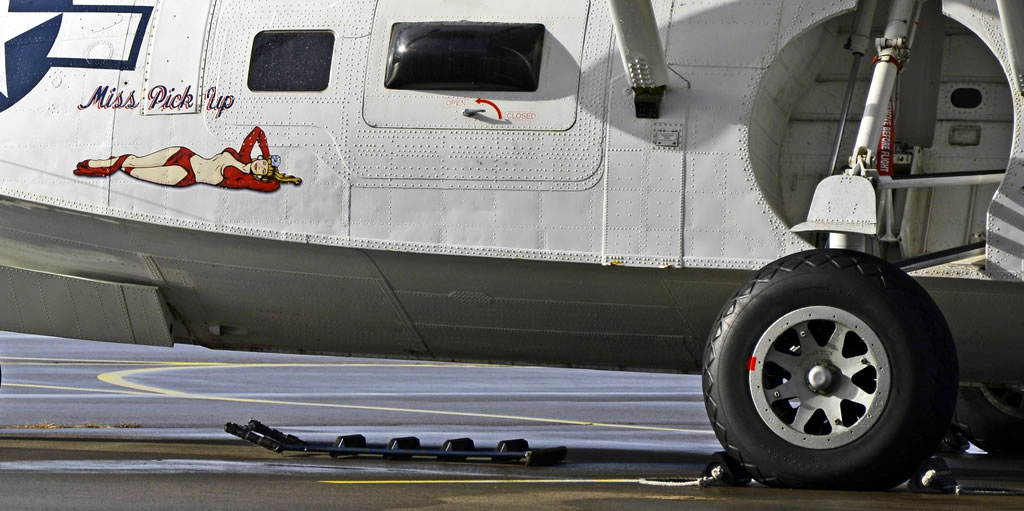 |
PBY Catalina "Miss Pick Up" in flight, September, 2020 (Photos by DELEHELLE Eric) |
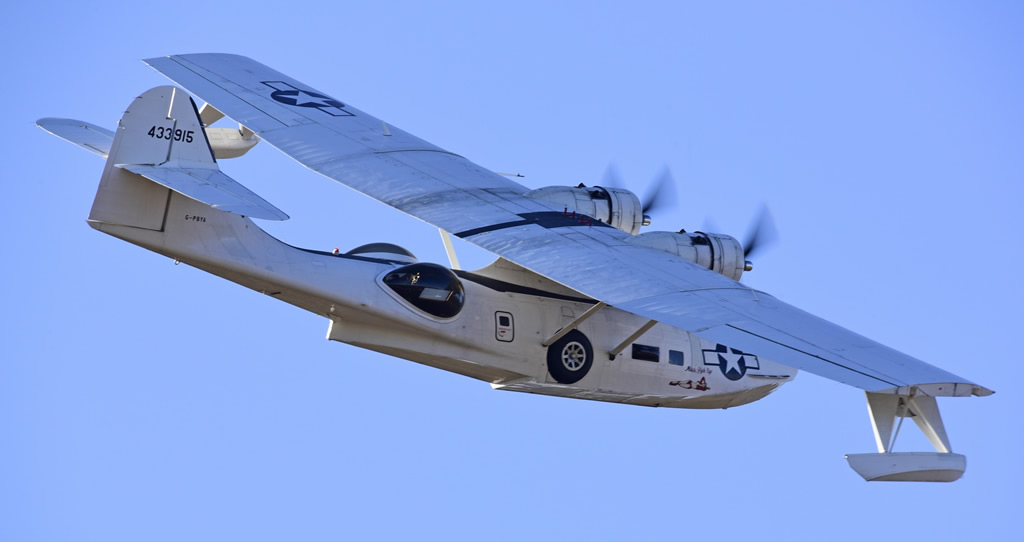 |
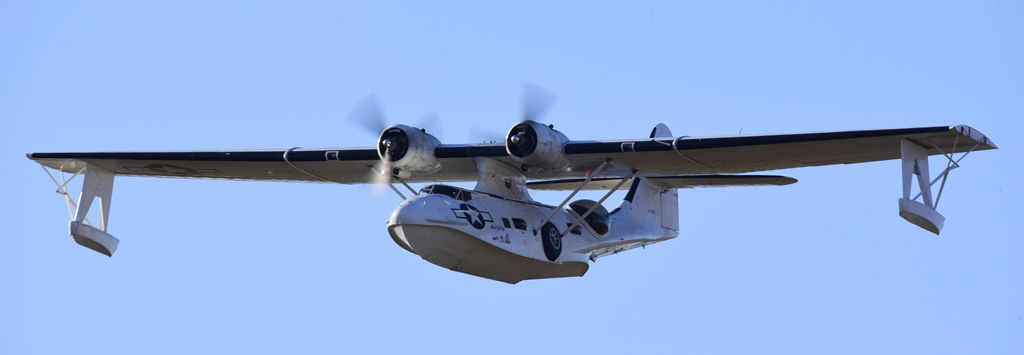 |
More Information about the Consolidated PBY Catalina
- The Catalina Preservation Society
- The Catalina Society
- PBY Catalina Foundation
- PBY Catalina: National Naval Aviation Museum in Pensacola
- PBY Catalina: US Naval History & Heritage Command
- Consolidated PBY-5A Catalina “The Princess of the Stars” (Struck off the register)
- Historic WWII Warbird PBY "Princess of the Stars" Finds New Home in Eugene

